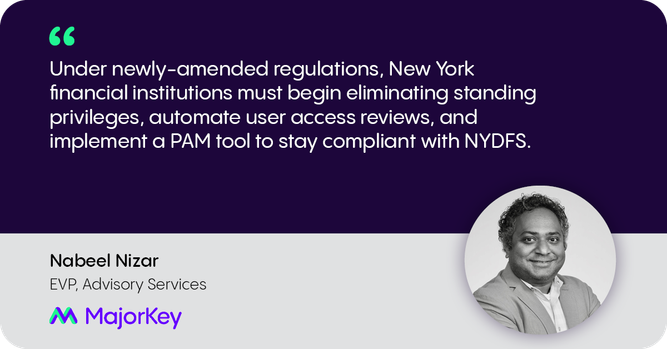Dental Instrument Manufacturer - World Leader
Our client created an online community for their customers to connect with peers, share information and gain education credit, but required assistance with their SSO solution.

Identity Security
What is Zero Trust? Zero trust is a mindset and long-term approach to security and governance that addresses the vulnerabilities in today’s work environment.
This highly complex strategy is being adopted by government agencies and businesses worldwide. But for many starting the journey, it's difficult to wrap your head around. For the next step on your journey, we're here to get you there.

Here at MajorKey, our goal is to help you identify where you are on the zero trust security journey... while sharing the good news, you may be further along than you think!


The uniqueness of a businesses culture, policies, and customers means there's no one size fits all solution.
This means that the foundation for your zero trust methodology must start with identity.
But how do you trust people, systems, software, and cloud apps?
Zero Trust Methodology
Our client, a world leader in dental instrument manufacturing, created an online community for their customers. MajorKey was able to assist them in implementing a scalable SSO solution that would support future needs as well as their current ones
Successfully implementing a zero trust methodology means going beyond rolling out a series of integrated tools and technologies, which are supported by a set of operational policies and authentication requirements.
Zero trust should be looked at much more strategically.
Complexities arise when outlining authorization to specific resources both on-premises and in the cloud, as well as how technologies will interact with data, threat intelligence, public key infrastructure, identity management, and vulnerability management systems.
Once this foundation has been established, companies can determine more sophisticated automation parameters like software-defined perimeters, micro-segmentation, by identity, or a combination therein.
MajorKey delivers successful technology solutions that align with zero trust, including:


Using continuously verified identities to manage network access, zero trust methodology creates a stronger defense for your system while simplifying security and the users experience, ultimately creating safer and more efficient organizations.
Implementing a zero trust strategy will bring a number of key benefits for all organizations, including:
New to Zero Trust? We've got you covered. Our security experts have put together helpful content to get you up to speed on this critical security methodology. Check back regularly as we will continue to update our selection.

Arun Kothanath | August 22, 2024 | 7 minutes
Learn about the essential features of PAM solutions, the difference between privileged access management and traditional access management, and best practices for privileged user management and authentication.

Arun Kothanath | August 8, 2024 | 8 minutes
Get an intro to Privileged Access Management, a core principle of component of cybersecurity with the main objective of enforcing the principle of least privilege for privileged accounts, credentials, and secrets.

Nabeel Nizar | July 25, 2024 | 6 minutes
Learn about the newly-amended NYDFS 23 NYCRR Part 500 cybersecurity regulations, and how it now calls for annual User Access Reviews (UARs) and Privileged Access Management for financial institutions.

Nabeel Nizar | March 26, 2024 | 6 minutes
Unlock the power of biometric authentication in Identity and Access Management (IAM) with our comprehensive guide. Learn about the latest advancements, best practices, and the integration of biometrics into IAM strategies.

Matt Graves | April 4, 2024 | 6 minutes
Learn how the meticulous preparation required for viewing a solar eclipse can be a perfect analogy for implementing the new NIST Cybersecurity Framework (CSF) 2.0 in your organization.

Nabeel Nizar | March 21, 2024 | 6 minutes
Explore the differences between on-premises vs cloud IAM solutions and the role of IAM for SaaS, PaaS, and IaaS cloud service models.

Nabeel Nizar | March 19, 2024 | 6 minutes
Explore the convergence of Zero Trust Security and Identity and Access Management (IAM) as the future of access control. Learn how this approach enhances security, mitigates risks, and ensures data protection in a dynamic digital landscape.

Nabeel Nizar | March 14, 2024 | 6 minutes
Discover how AI & Machine Learning revolutionize Identity and Access Management (IAM). Explore innovative solutions that harness AI/ML for enhanced security, automation, and adaptability in the digital era.

Nabeel Nizar | March 12, 2024 | 6 minutes
Learn how IAM solutions in Education secure student data, streamline access to resources, and facilitate seamless collaboration in academic environments.